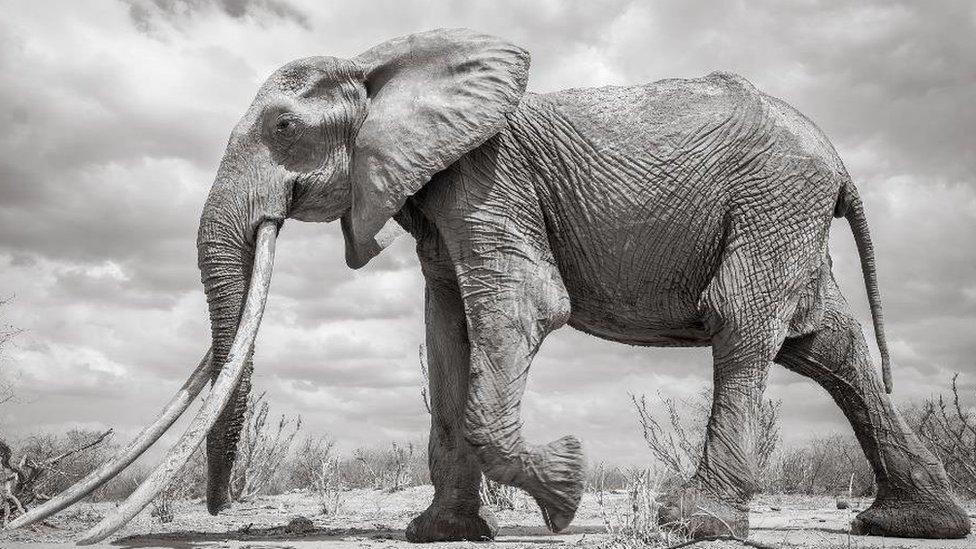Last photos of Kenya's 'elephant queen'
- Published

"If I hadn't looked upon her with my own eyes, I might not have believed that such an elephant could exist in our world."
For more than 60 years, the elephant known as F_MU1, roamed the plains of Tsavo, Kenya. She was one of Africa's last remaining "super tuskers" - so called because their tusks are long enough to reach the ground.
British photographer Will Burrard-Lucas captured these incredible images shortly before she died of natural causes.
"If there were a Queen of Elephants, it would surely have been her," he tells Newsbeat.
There are now fewer than 30 super tuskers left in Africa.
Will photographed her in partnership with the Tsavo Trust and Kenya Wildlife Service, and spent 18 months on the project.
You can read more about how he captured these amazing shots in his .
The first time he saw the elephant, Will says he was "speechless".
"F_MU1 was skinny and old but she strode forward with stately grace.
"Her tusks were so long that they scraped the ground in front of her. She was like a relic from a bygone era," he writes in the blog.
"She had survived through periods of terrible poaching and it was a victory that her life was not ended prematurely by a snare, bullet or poisoned arrow," he says.
Animals like F_MU1 inevitably attract the unwanted attention of ivory poachers and are regarded as very special because the tusks do not often get that long without breaking.
Two years ago, a 50-year-old super tusker called Satao II, was killed near the Tsavo National Park border.
It's thought poachers had used a poison arrow.
"Super tuskers are very rare these days, precisely because their big tusks makes them prime targets for trophy hunters," says Dr Mark Jones from the Born Free wildlife charity.
"Because these animals are all-too-often taken out before they have reached their reproductive prime, super-tusker genes are being bred out of elephant populations, and we could very well be seeing the last of them."
Will's photographs feature in a new book Land Of Giants.
The last photo he took of F-MU1 was taken at a water hole.
"It was a feeling of privilege and euphoria that will stay with me forever," he says.
- Published25 February 2019